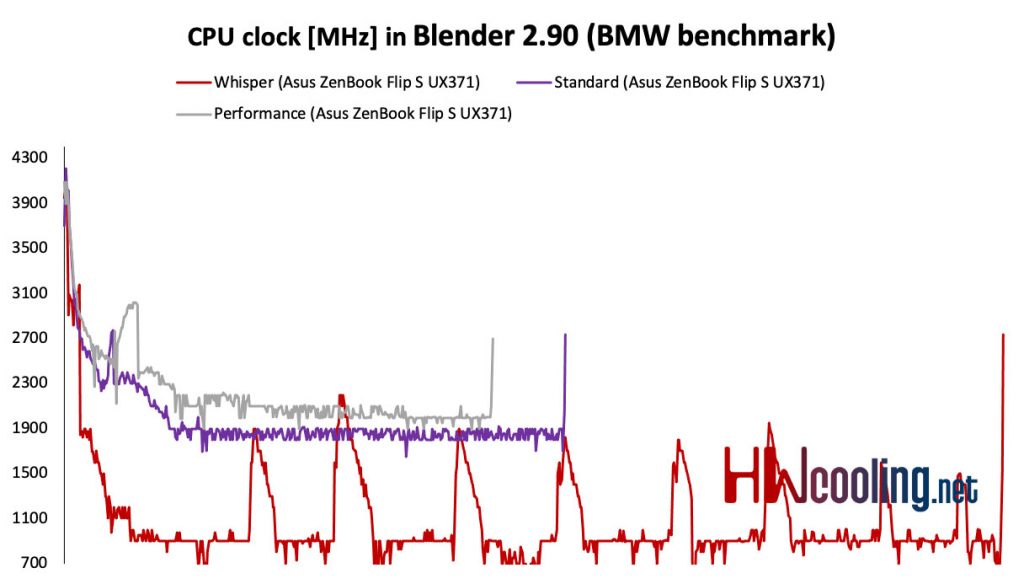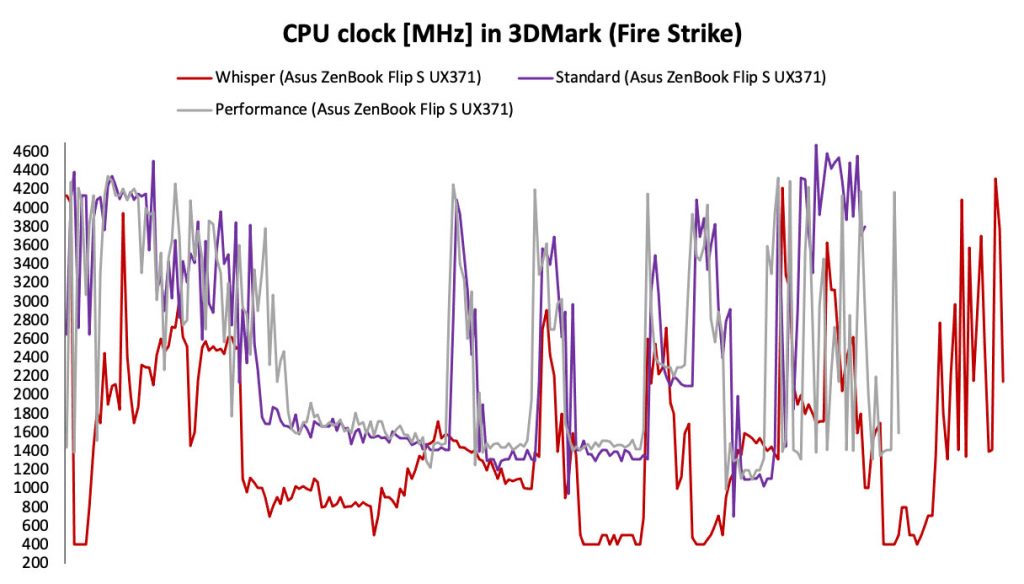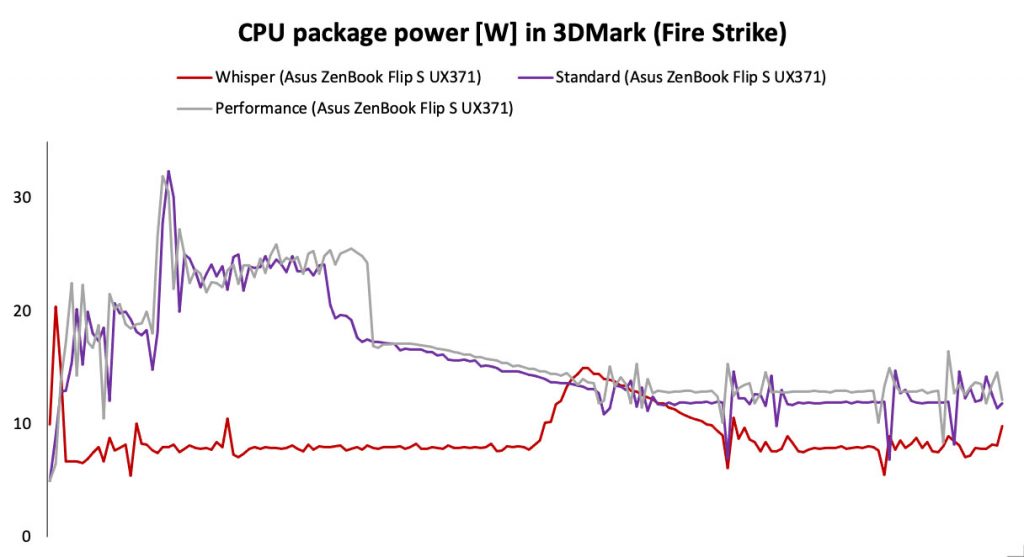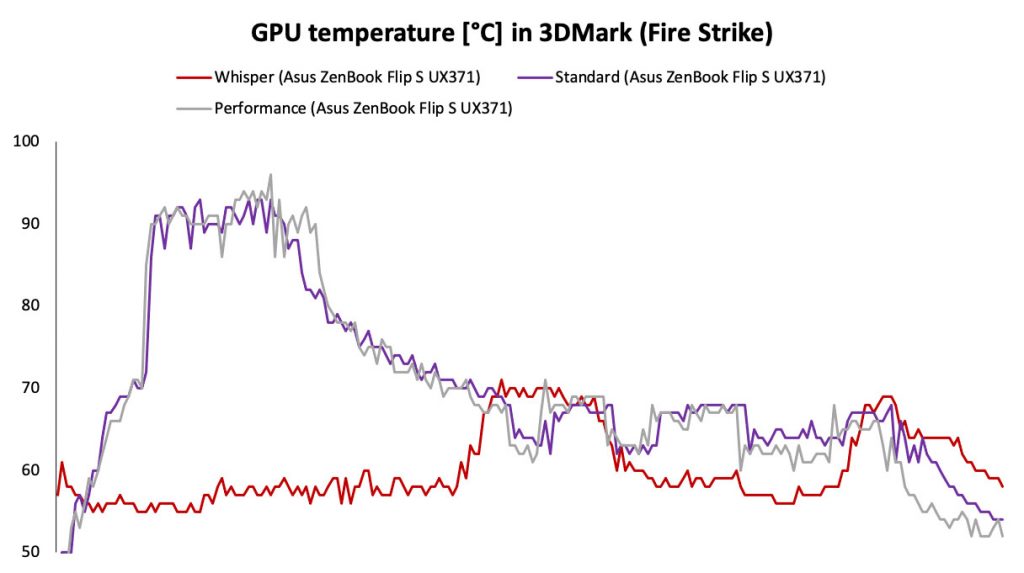Clock, power draw and temperature analysis
This year is packed with technological innovations and laptops are an area where it’s all happening. In addition, Intel is under a lot of pressure, which was reflected in the relatively fast release of the new gen of Tiger Lake processors, and the first novelty from Asus has already reached our editorial office. What is the new ZenBook Flip S like and is the 11th gen of Intel Core even sensible compared to the 10th gen in the recently tested ZenBook 14?
Blender
Just as we started to monitor the development of clock speed, power draw and temperatures in Blender and 3DMark in gaming notebooks, we will also address these areas for non-gaming notebooks. In this case, we are mainly interested in the visualization of the performance course for individual performance modes and CPU load, but also the combined CPU + GPU load.
The Blender test is one of the longer ones. It shows large differences between the clock speed of the individual modes. Whisper almost immediately drops to 1 GHz or less. Standard and Performance also show a large drop in clock speed from over 4 GHz to just around 2 GHz, but we can see that Performance maintains a slightly higher clock than Standard. Also interesting are these leaps in Whisper mode, we have not seen this with another laptop.
Power draw exactly copies the clock speed curve. Standard and Performance are at 15 W, Whisper below 10 W.
The course of the temperature during the test is again very similar to the clock speed and power draw, and after the initial values of 90 degrees, we gradually decrease to 70 and in the case of Whisper even to 60 degrees.
The difference in performance between Performance and Standard is only 17%, which was seen in similar performance curves. However, Whisper shows 2 and 2.3 times worse results than Standard and Performance, which is definitely not negligible.
3DMark
A similarly long stress test is the good old Fire Strike. Here you can see relatively chaotic clock changes from idle to full boost (4.4 GHz) depending on the current scene. Again, however, we see that Standard and Performance have similar clock curves, while Whisper goes its own way with lower values.
We see a big difference in power draw, where Standard and Performance exceed 30 W at the maximum and stay around 25 W for longer until they start to fall to 15 W in the half of the test, as we saw with Blender. Whisper, on the other hand, immediately drops below 10 W and, except for a small increase beyond the half of the test to 15 W, sticks to this value.
Standard and Performance temperatures are similar to clock speed and power draw, so at the beginning of the test about 90 degrees with a drop to about 70. Whisper keeps it below 60 degrees.
The GPU load for 3D scenes is the same in all modes.
We also see a big difference in GPU power draw between the modes. The Whisper is below 5 W with one jump to 10 W, while the Standard and Performance at the beginning of the test take between 15–20 W until they drop to 10 W.
The temperature of the GPU is practically the same as the temperature of the processor, as it is an integrated part.
The difference in the total score between Standard and Performance is smaller than with Blender, only 11%, but Whisper is again more than 2× slower compared to the other two modes.
Summary
After analyzing the graphs, simple conclusions can be drawn. The Standard mode will be ideal for normal use, you can get a few extra percent of performance when playing games or using demanding programs after switching to Performance mode. On the contrary, when the longest possible battery life is required, the Whisper mode is an ideal solution, as it significantly affects the performance of the device. This is how I somehow imagine that the performance modes should work. Thumbs up, Asus. Maybe just one tip for improvement, the difference between Standard and Performance could be a bit bigger.
- Contents
- Specs and details
- Testing methodology
- Display tests
- Rendering and Geekbench
- 3D/PCMark and Unigine Heaven/Superposition
- Gaming tests – integrated graphics
- Encryption, encoding
- Memory and storage tests
- Heating and battery life
- Clock, power draw and temperature analysis
- Utility app
- Rating





















very clear and good article easy to understand. Thank you